Marsh calla lily - features of growing marsh calla lilies
Marsh calla Is an evergreen perennial plant of the aroid family. It is also called calla. Cut flowers are very resistant to wilting and can last in a vase for about 3 weeks. Under natural conditions, this flower lives in North America, Europe, Asia. It is located on swamps, pond banks.
Content:
- Description and types
- Reproduction by layering
- Tuber propagation
- Seed propagation
- Landing
- Calla care
- Protection against diseases and pests
Description and types
Flower growers usually grow calla in greenhouses and on window sills. The plant feels comfortable in a natural reservoir with muddy or clay soil, and even close to it. In height, it grows to 30-35 cm, blooms from May 15 to June 30,
Fruits - berries of bright red color, the size of a cherry.
Popular calla species:
- The Ethiopian calla has fleshy, dense arrow-heart-shaped leaves. Peduncle up to 1 m long. The flower has a white cover in the form of a funnel. The inflorescence is a yellowish ear. Grows in South Africa.
- Elliot's calla has broad-heart-shaped leaves, they are green in color with white spots. The bedspread is bright yellow on the inside, green-yellow on the outside. The inflorescence is yellow. Grows in humid places in South Africa.
- Calla Remann, it has graceful funnel-shaped flowers ranging from pink to purple. It grows up to 40 cm in height. It has dark green leaves with white spots.
Reproduction by layering
Suckers with one or two roots appear around the plant, carefully separate them and plant them in small pots. This is done in August. Then water the planted shoots abundantly and spray them with water for a week. When the flower grows strong roots, transplant pour it into a larger pot, pour drainage on the bottom of the pot.
This is done in August-September, the pots should have a diameter of 8-10 cm.
Water abundantly. During the growing season, make fertilizers, after every 2 weeks, first cow dung, and after another 2 weeks, complete mineral fertilizer.
Tuber propagation
For reproduction of Elliot's calla, tubers are taken, they are stored in a warm and dry room for a month at an air temperature of 25 ° C, due to the fact that they ripen at this time. After they are laid out in a dry and cool room, where they lie all winter. In March, calla is planted in fresh soil in pots.
Then they are placed in a well-lit place in a cold greenhouse and watered regularly.
The tubers can be bought at the store and are sold in sachets. They are usually covered with wood shavings or dry peat. Don't buy shriveled or sluggish tubers.
Breeding features:
- Shake off the shavings from the tubers, put them in a solution of potassium humate for 1-2 hours.
- Choose evenly colored tubers, they should not be damaged, they should have 1 bud.
- If you see rot or growths on the tubers, then scrape them off with a knife and smear these places with green paint.
- Before planting them, soak them in a weak solution of potassium permanganate.
- It is best to plant tubers in plastic pots, they have deep trays, they must constantly have moisture.
- Place drainage on the bottom of the pot with a layer of 4-5 cm, then fill the pot with nutritious soil so that 10 cm remains to the edge of the pot.
- Tamp the earth and spill with potassium humate solution.
- Take a close look at the tuber. It is smooth on the bottom and has a rosette on top. The rosette is surrounded by the beginnings of future roots. If the buds have turned white and swollen, this is good, this means that the tuber is alive and will grow immediately after it is buried in the ground.
- Place the tuber in the ground with the rosette facing up.
- Plant the tubers to a depth of 6 to 12 cm.
- Cover the pot with plastic wrap.
Seed propagation
For planting, take freshly harvested the seeds, as they very quickly lose their germination. They are soaked for 6 hours in potassium humate. Then they put it on a towel moistened with water on a lid or tray, covering it with another towel on top.
Set for 7 days in a warm place with a temperature of 20-23 ° C. The fabric is wetted all the time. When the seeds germinate, they are sown in a tray with soil, and the sprouts are awaited. Then they are planted in pots.
It is better to take a clay pot, it is necessary that there are holes for drainage in it, then the water will not stagnate and the roots will not rot.
The pot should have a diameter of 15-17 cm. You can buy soil for calla lilies or make the earth yourself by mixing equal parts of leafy and turfy land and pouring in some sand and peat. Sprouts are planted in holes up to 3 centimeters deep, they are thoroughly watered. 1-2 plants are planted in 1 pot.
Landing
Plants are planted in shallow pots, only slightly covering the root collar with soil. The pots are placed on racks, or on the beds in the greenhouse. The temperature should be 10-12 ° C, after which it is increased to 14-16 ° C in order to stimulate the formation of flowers. Higher temperatures negatively affect the quality of the flowers. They can bloom almost all year, except for the dormant period they need.
The time when they bloom can be adjusted by the temperature in the greenhouse, but it is better that they bloom in winter, from November to March. Plants can also be planted in the ground of the rack at a distance of 30x30 cm. They bloom strongly for 2-4 years, and then the side shoots are separated, and the calla is transplanted again.
It is necessary to regulate the temperature, water the plants abundantly, ventilate and provide them with a dormant period in the summer.
Until the beginning of December, the temperature should be 8-10 ° C, so that the flower blooms early, it is raised to 12 ° C, and then up to 15 ° C. When calla is in bloom, you need to regularly make full fertilizer, but halve top dressing nitrogen.
Calla care
He needs a soil consisting of a mixture of 2 parts of leafy soil, 2 parts of coniferous soil, 2 parts of peat and 1 part of sand. Fine coal, bark of coniferous trees, sphagnum moss are added to the mixture. Young plants are replanted annually in April or May. An adult flower is transplanted once every 2-3 years in the spring.
In winter, he needs to provide bright lighting. The flower is placed by the window, you can illuminate it with artificial light. In the summer, you should not put the calla in an open place so that it does not fall on the direct rays of the sun. If the lighting is insufficient, the plants may stop blooming.
During the growing season, the best air temperature is + 18-20 C.
After flowering varieties of white color, they need a temperature of 11-12? C, and for calla lilies of other colors, the air temperature should be 27-28 C. So it takes about a month and the tubers ripen. The plant does not like drafts. In winter, the temperature in the room should not be lower than +15 ° C. If the plant grows in a garden or in a greenhouse, then for the winter, the tubers are dug up and placed in a cool place, but not watered.
Top dressing and fertilizers:
- The potting mix is usually enough for a year. By the sixth watering, you should dissolve complex mineral and organic fertilizers in water, water the flower. But you need to make sure that fertilizers do not fall on the bracts. If the leaves turn yellow and rise, then the plant lacks fertilizer.
- During the flowering period you need feed plant of crushed eggshells, sliced fruit peels, tea leaves. With the constant replacement of the top layer of soil with a new one, the plant does not need a transplant for a long time.
Watering calla needs abundant and regular. Watered with a small amount of water 3-4 times a day every three days. White calla is especially demanding on moisture, as in natural conditions it grows in swamps. The flower is watered if the topsoil dries up by 1 cm. For flowers of a different color, the depth of drying of the soil is up to 2-3 cm. After the plant has faded, it is watered less often, and from November to February it is not watered.
Calla loves high air humidity, so in summer the leaves can be constantly spray with water.
It is impossible for water to get on the blanket, as stains will appear on it. Plant the plant directly into the reservoir where there is shade and sun. To prevent the plant from growing throughout the reservoir, it is placed in a pot with holes in the bottom. The pot is filled with a nutrient mixture and covered with oily clay on top to a thickness of 2 cm so that the soil does not wash out. After that, pots with a planted plant are placed at the bottom of the reservoir near the shore. As it grows, cut off excess shoots.
Protection against diseases and pests
The flower can get sick with gray and horse rot, anthracosis, bacterial rot. Fungus diseases can occur due to excessive soil moisture, if there is another diseased plant near the plant, with an excess of nitrogen fertilizers.
Tips for flower growers:
- If the plant is sick with root rot, then they stop watering it or replace the soil with a drier one. If the plant is sick with gray rot or anthracnose (brown spots and streaks appear on the leaves), then you need to process it fungicides.
- When a flower becomes ill with bacterial rot, it cannot be cured. Therefore, in order to prevent this disease, you need to process the tubers before planting. When such rot appears, the signs of which are darkening of leaves, peduncles, roots - all diseased parts of the flower are removed.
- Callou can damage aphids and spider mites, signs of these diseases are small yellowish blotches on the leaves. Spraying with "Fitoverm", "Vertimek", as well as infusion of tobacco or pyrethrum helps from the tick. If the plant is very badly damaged by a tick, then sprinkle it with a solution of pegasus or decis. For aphids, you can simply spray the plant by dissolving laundry soap in water.
- When damaged by a scabbard leaves turn yellow, dew forms on them. You need to wipe the flower with a cloth dipped in a soap solution, or spray it with insecticides.
Important! Calla is poisonous. If it enters the body, it can cause intoxication, vomiting. Because of this, it is impossible for children to play with him. Do not eat any part of the fresh flower.
More information can be found in the video.




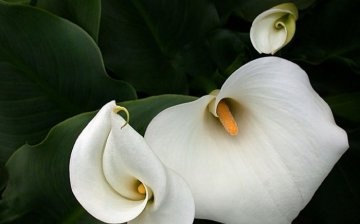
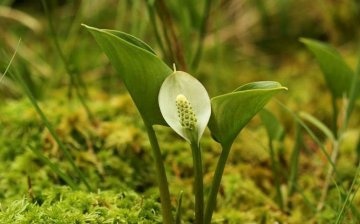
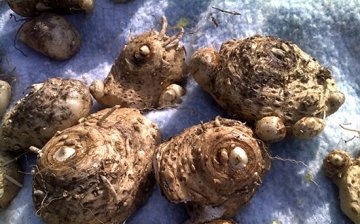
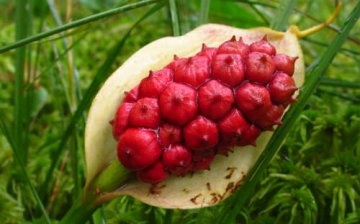

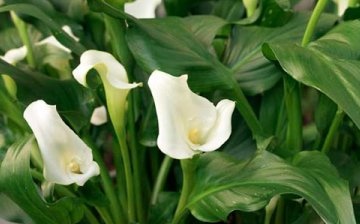
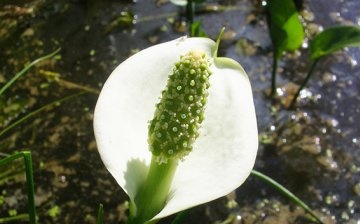








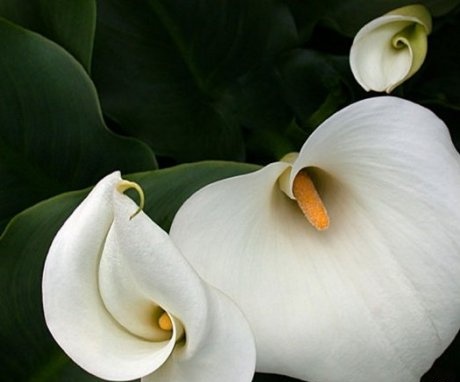
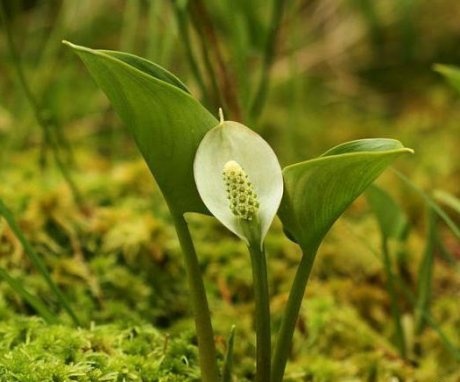
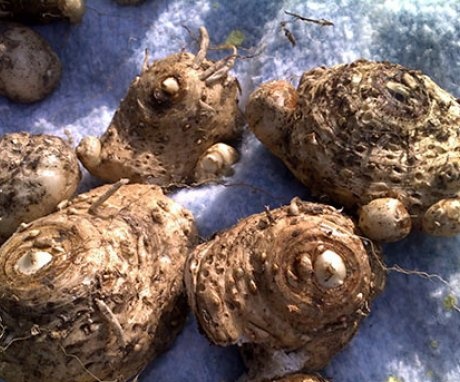
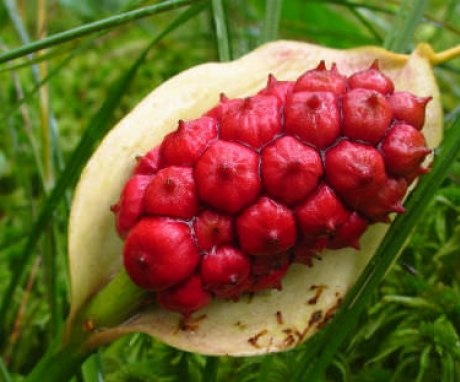
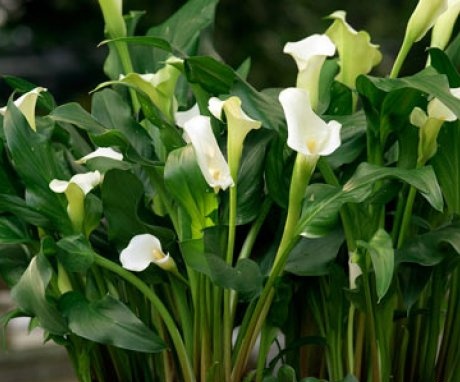
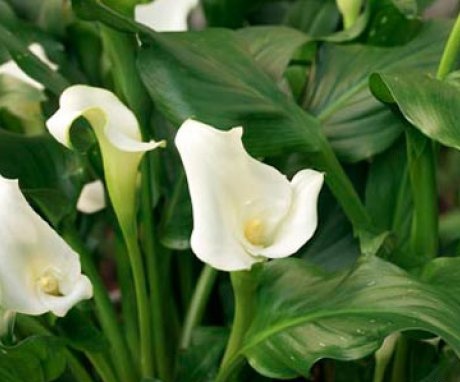

An incredibly beautiful and unusual flower, why they called it marsh ... I really want to grow it on my site or even at home ... Do you think he will like to grow at home? There is not much sun.